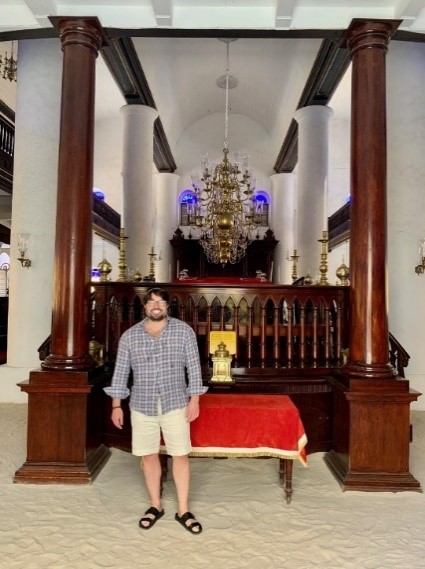Andy at Mikve Israel Emanuel Synagogue
Many people enjoy the feeling of sand between their toes, but not many have enjoyed the feeling of sand between their toes inside of a synagogue. Sand in a synagogue? Until recently I’d never heard of such a thing. That all changed when I visited Mikve Israel Emanuel Synagogue on the island of Curaçao, a Lesser Antilles island north of the Venezuelan coast. Not only did I get to visit this incredible temple, but I also learned about the long history of the Jewish people on this small island.
The oldest Jewish community in the Western Hemisphere is in Curacao. Jews have been living on this island since the 1600s. While their numbers are dwindling, there is still an active Jewish community on the island today. It is also the site of the Mikve Israel-Emanuel Synagogue, the oldest continually active synagogue in the Americas.
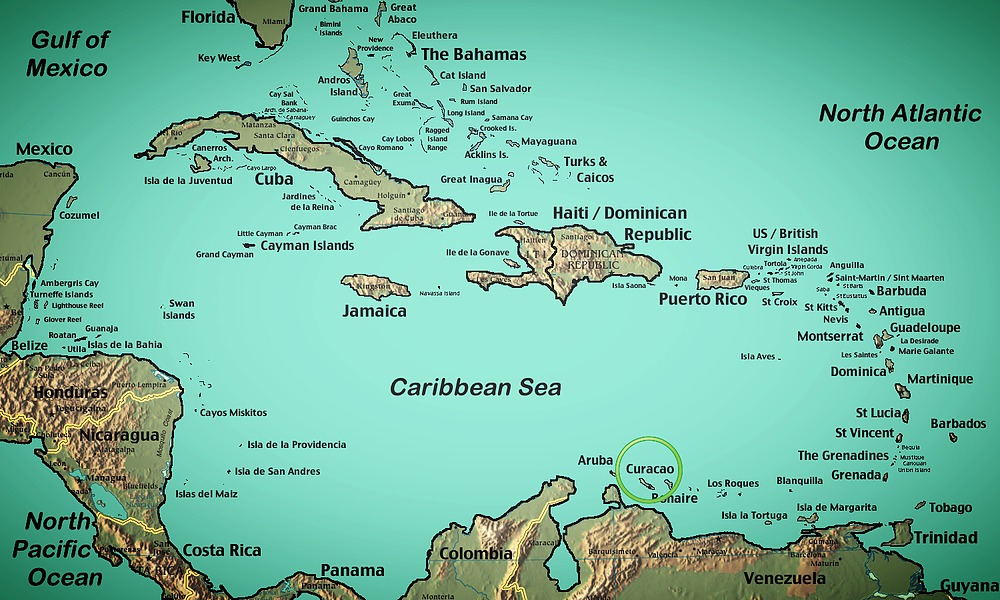 The Island of Curaçao
The Island of Curaçao
The first Jew to step foot on Curaçao was Samuel Cohen, a translator on a ship for the Dutch West India company. He came to the island in 1634 as part of a mission to claim it from the Spanish. The island served as a strategically valuable base from which to attack Spanish ships. After the Peace of Westphalia a series of peace treaties ending the various European wars of religion in 1648, the Dutch East India Company tried to entice Dutch citizens to settle on the island. There were few takers until 1651 when Joao d’Ylan brought 10 to 12 Jewish families from the Netherlands to Curaçao.
They were Sephardic Jews who fled Spain in the late 1400s due to the inquisitions and the Edict of Expulsion. They moved to Portugal, but the inquisitions and their pressure to convert eventually followed them there. They then moved to Amsterdam, becoming Dutch but still speaking Portuguese. Upon their arrival on Curaçao they established congregation Mikve Israel and built their first synagogue.
In 1659, a second wave of Jewish settlers moved to the island, drawn by the religious liberties and tax incentives the Dutch offered to settlers. They brought a gift for the pre-existing Jewish community; a 14th century Torah scroll from the Amsterdam synagogue. This Torah is still used in services at Mikve Israel-Emanuel synagogue today.
The Jewish population centered itself in the city of Willemstad. In 1703, they established a new synagogue in the city. It was later demolished in 1730 to make room for an even bigger one. In 1732, temple Mikve Israel was completed and it remains the oldest continuously operating synagogue in the Americas. It is also called the Snao, the word for synagogue in Papiamentu (a language spoken throughout the Dutch West Indies). The Jewish population grew until the late 1700s when it peaked at around 2,000. During this time Jews made up half of all European residents of Curaçao.
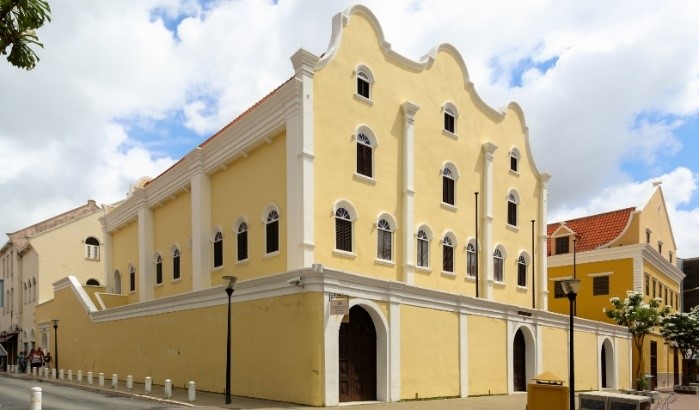 Mikve Israel Emanuel Synagogue
Mikve Israel Emanuel Synagogue
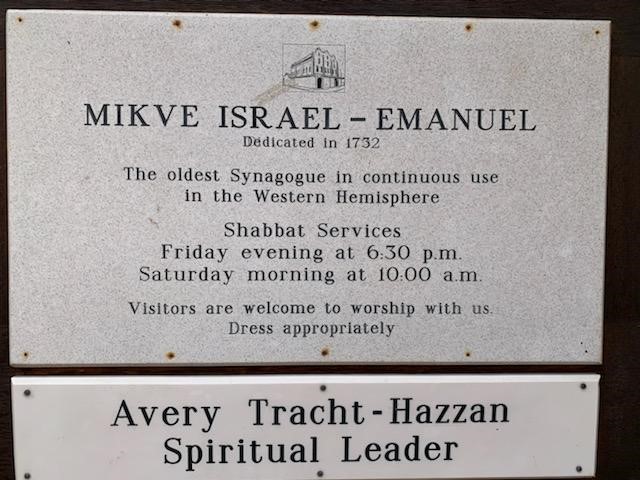 A placard outside the synagogue showing its date of completion.
A placard outside the synagogue showing its date of completion.
Initially, Jewish settlers tried their hand at agriculture but Curaçao’s soil was not well suited for it. They turned to trade, shipping and banking. They were able to open trade routes between Curaçao and both Northern Europe and South America, enabling the Jews of Curaçao to become the largest and wealthiest Jewish settlement in the new world. The Jews of Curaçao used their wealth to make contributions to other Jewish communities abroad. They helped fund Manhattan’s Shearith Israel congregation and to this day the Upper West Side synagogue holds a special prayer of gratitude to them each Yom Kippur. They also provided support for the construction of America’s oldest synagogue, the Touro Synagogue in Newport, Rhode Island.
In 1864, the Jewish community underwent a schism. A feud began over the use of an organ during services, an act forbidden by the Orthodox movement at the time. The organ was eventually installed in 1866 but it was too late, about a third of the community left to form a new congregation. This new congregation was based on the Reform Jewish movement and they founded Temple Emanuel-El as their synagogue. As for the organ that started it all, it was used for 100 years before falling into disrepair. In 2002, with funding from the government of Holland the organ was restored.
In the 1890s, the Jewish Community backed Simon Bolivar in the fight for Venezuela’s independence. Some joined his army, others provided material support. The Jews of Curaçao were active in supporting many local uprisings, particularly those against the Spanish whom they still resented for the inquisitions. In the 1900s, the first Ashkenazi Jews moved to the island. More followed in the 1940s, when Curaçao began taking in Jewish refugees during World War II.
In 1964, the two separate congregations of Curaçao decided to reunite. Together they formed congregation Mikve Israel-Emanuel. This newly reunified congregation decided to follow the Reconstructionist Jewish rituals. The Mikve Israel synagogue was renamed Mikve Israel-Emanuel synagogue and became the newly unified congregation’s temple.
Today, the Jewish community in Curaçao is facing an existential crisis. Young Jews are leaving the island, seeking higher education and economic opportunities elsewhere. Those that do leave seldom return. As a result, the number of Jews on the island has dwindled to fewer than 350, many of them older. In addition, the Jewish community has had trouble attracting a rabbi and there is no kosher meat available on the island. However, not everyone believes that hope is lost for the Jews of Curaçao. The Chabad movement established a presence there in 2017, hoping to restore and grow the island’s Jewish population. There is also the hope that increasing tourism to the island will provide the Jewish community the economic lifeline needed to persevere.
I was blessed with the opportunity to visit Mikvé Israel-Emanuel Synagogue. The synagogue is emblematic not only of the rich Jewish history on Curaçao, but also of the unique traditions developed over the centuries. On Yom Kippur, all the temple’s board members wear top hats and tailed tuxedos. They also light hundreds of candles placed atop four massive chandeliers. The synagogue’s most interesting tradition isn’t a ritual, but a feature of the building. Its floors are covered in sand.
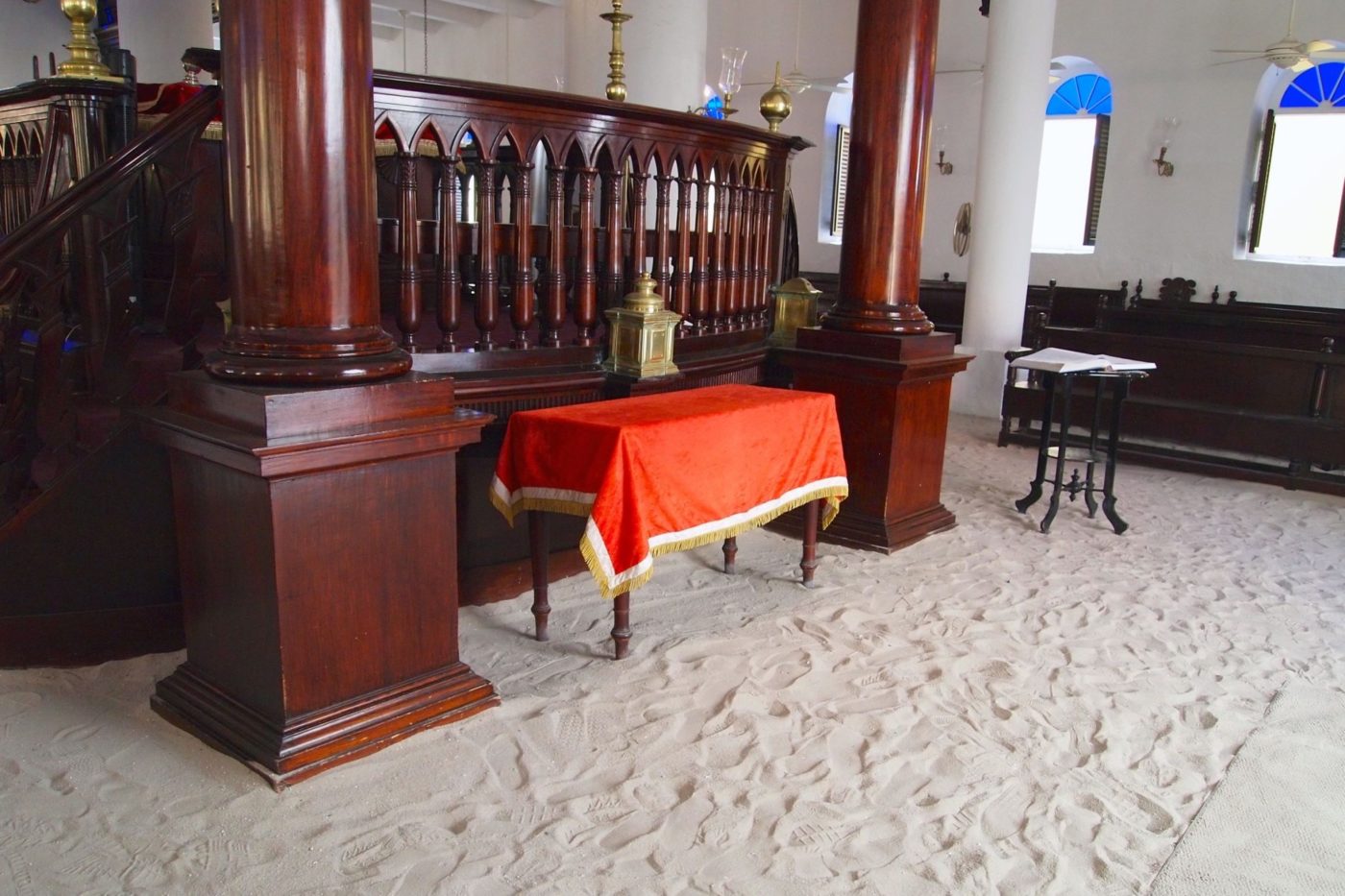 The interior of Mikvé Israel-Emanuel Synagogue
The interior of Mikvé Israel-Emanuel Synagogue
No one is entirely certain why the floors are covered with sand but there are three popular explanations. The first is that it symbolizes how the Jews wandered the desert for 40 years after the exodus. The second is that it represents God’s promise to Abraham “I will surely bless you and make your descendants as numerous as the stars in the sky and as the sand on the seashore.” (Genesis 22:17). The third explanation is that it is a reminder of the deadly Inquisitions the congregants’ ancestors faced in Spain and Portugal. The sand muffled the footsteps and noises made by those praying within to help hide them from persecutors. Regardless of the sand’s origins, it has endured, a lasting monument to the history and unique character of this magnificent synagogue.
As I stood in the Mikvé Israel-Emanuel Synagogue, the cool sand between my toes, I realized this place was truly magical, meaningful, and memorable. It is the oldest synagogue in the Western hemisphere, a memorable landmark and testament to the Jewish people’s will to endure. The fact that it is a building that has sand covering the floor makes it unique in a magical way. The sand is what makes it meaningful too. As you walk around your footprints are visible, imprinted into the sand. They linger, showing you where you have been and where others have come before you. In doing so, the sand creates an even deeper spiritual connection. It reminds us that we leave a legacy, that everything we do ripples out and can be seen by and affect others. Much like the footprints in the sand, we do not last forever, but we still leave an impact as we move through life.
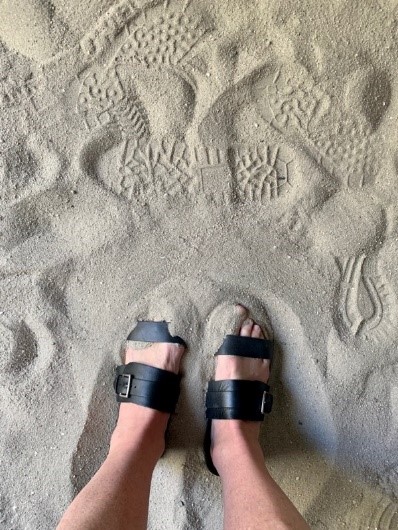
The sand covered floors of Mikvé Israel-Emanuel Synagogue
The next time you find yourself standing in the sand try to think about how your actions affect others. Then remember the small but determined Jewish community of Curaçao and their incredible sand-filled synagogue.
Fun Fact: The official language of Curaçao is Papiamentu. It is a hybrid language that blends elements of African, Spanish, Dutch, French, Portuguese, English, and Arawak Indian. The influence of Jews on Curaçao’s culture as a whole can be seen by the large number of Hebrew words and phrases that have been integrated into the Papiamentu dialect.
Fun Fact: Blue Curacao, the famed azure colored orange liquor in many a tiki drink, margarita and electric lemonade originates from the Island of Curaçao. When the Spanish arrived on Curaçao they brought oranges with them. These normally juicy fruits could not handle Curaçao’s climate. They became desiccated, bitter, and inedible. They were dubbed the laraha and were largely forgotten for many years. Eventually, an unknown individual realized that drying the peels created a pleasant aroma. From there people began to mix it with alcohol and sugar to create a delightful liqueur. It is similarly unknown where the practice of dying the drink blue originated. What is known is that in 1896 Jewish businessmen Haim Mendes Chumaceiro and Edgar Senior founded Senior & Co. They began producing curacao liqueur for pharmaceutical purposes, but it soon proved popular as an aperitif and digestif. Since then their product has been in demand. While the company incorporated, the founders’ families are still major stakeholders. They still operate today and are the only company to only use larahas from Curaçao in their liqueur, plus it’s kosher.
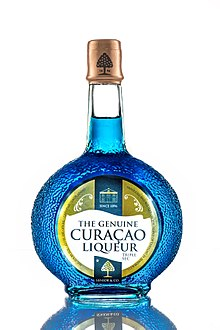
Senior & Co. Curacao Liquer
Fun Fact: There are three other sand covered synagogues remaining in the world. They were once a more common occurrence amongst Dutch-Portuguese Jews. The other remaining synagogues are located in Jamaica, Surinam, and Saint Thomas.
Further Reading:
Here is a link to the official website for the Mikve Israel Emanuel Synagogue
A fascinating firsthand look at Curaçao’s Jewish community can be read here.
The synagogue made it into the Atlas Obsucra! You can read its entry here.
Smithsonian Magazine wrote an article about the challenges facing Curaçao’s Jewish community. You can find it here.
The Jewish Telegraphic Agency’s archive has an article about the Jews of Curaçao originally published in the 1930s. You can read it here.
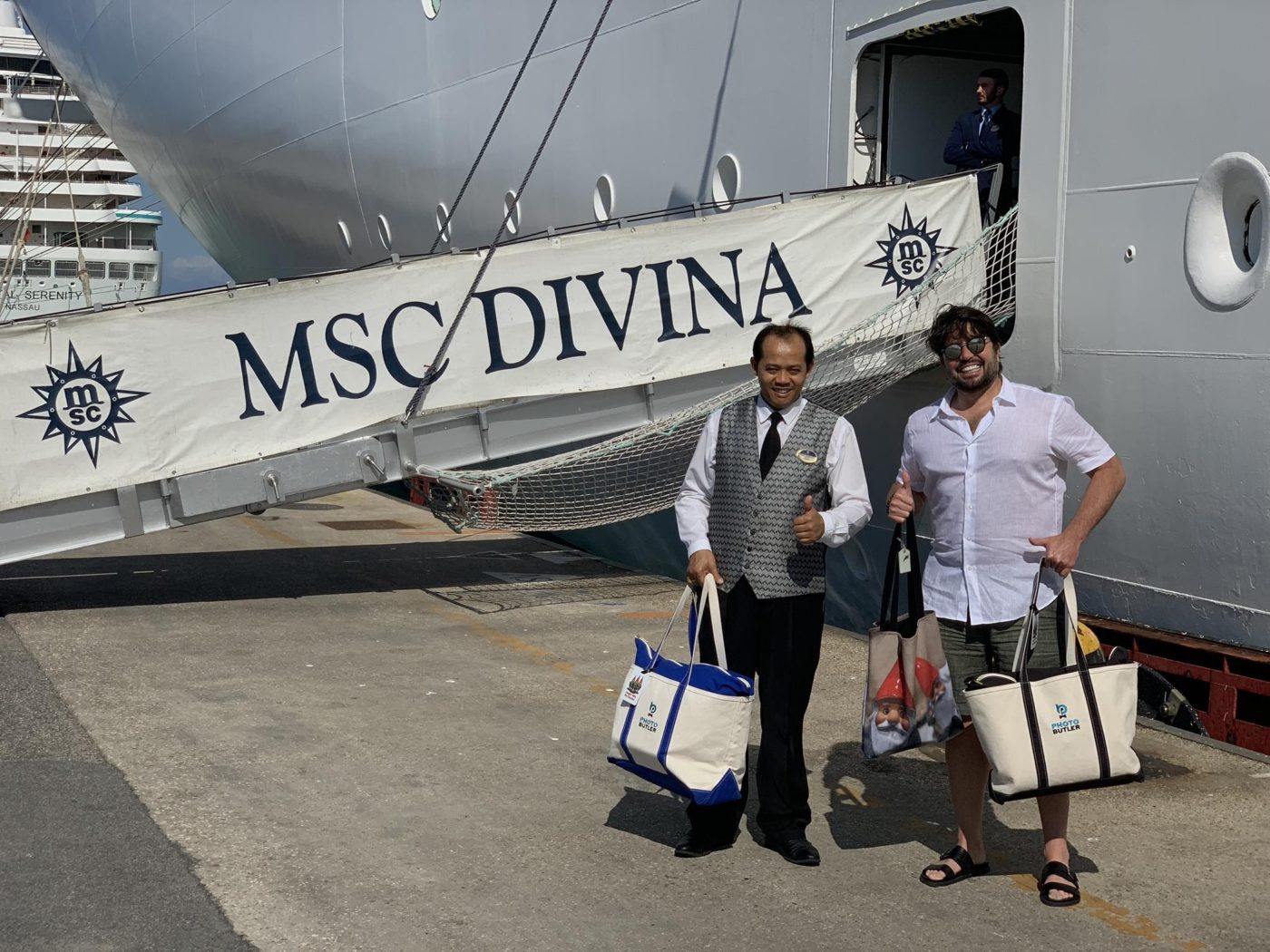
Andy disembarking from the Divina
I would like to give a special acknowledgement to the MSC Divina. September 2019, I disembarked from the Divina to go to the Great Synagogue of Rome. In March 2020, I went from the ship to see the Mikvé Israel-Emanuel Synagogue in Curaçao. Truly the ship lives up to its divine namesake, helping me to see some of the most historic, spiritual, and moving synagogues in the world all while providing unmatched hospitality. I can’t wait to see what wonders the MSC Divina will take me to next!

